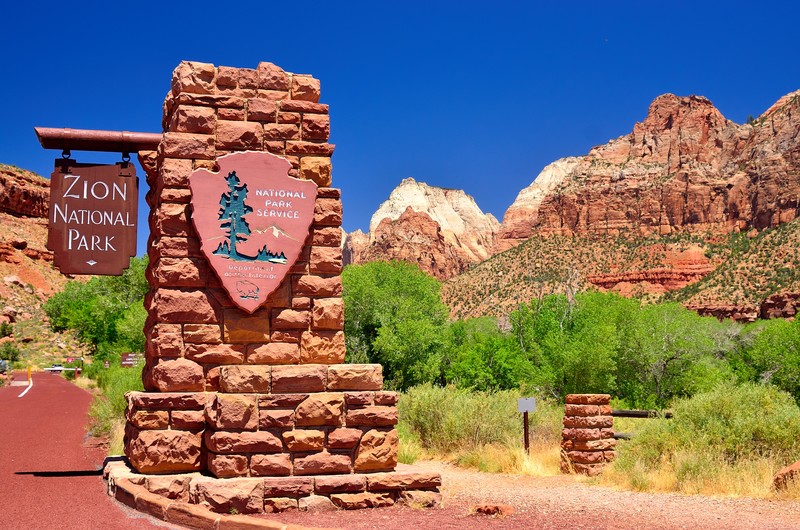Zion Explores Cap On Number Of Visitors As Other Parks Fiddle

Curbs On Park Overcrowding Mandatory But Are A Politically Perillous Third Rail
Washington, DC — Zion National Park, one of the country’s most popular, is considering a cap on visitation in order to remedy crippling overcrowding. It is one of the very few major national parks to directly address site-specific carrying capacities, despite a nearly 40-year statutory mandate that all parks have them, according to Public Employees for Environmental Responsibility (PEER).
National parks report record numbers of visitors for the third year in a row – with Zion leading the pack, experiencing double-digit increases annually and topping 3.7 million visitors last year. The park’s peak season now extends beyond completely gridlocked summers into spring and fall. Besides rising choruses of complaints about lengthening lines for parking and bathrooms, Zion is suffering serious damage to its vegetation, trails, and other assets.
The National Parks and Recreation Act of 1978 requires each national park to adopt visitor carrying capacities for “all areas.” Despite this nearly 40-year mandate, few national parks have established any carrying capacities, according to a 2016 PEER review. Recent National Park Service leadership has taken the position that there is no such thing as too much visitation, measuring success by spiking visitor levels.
The extreme political sensitivity of visitor caps has caused Zion to proceed very cautiously, holding a series of eight public meetings leading to a “Preliminary Alternative Concepts” document now out for public comment through August 14th. A final decision is slated for winter 2018 but the park takes pains to stipulate that, at this point, it has not endorsed anything. However, the preliminary document indicates that Zion is laying the groundwork for –
- A year-long online reservation system, requiring advance permission in order to enter;
- Limiting hours of access for RVs, tour buses, and other “oversized vehicles”; and
- “More engineering controls, such as fencing or vegetation” to keep pedestrians from straying from designated trails.
“Zion is dipping its toe into what it considers to be very hot water,” stated PEER Executive Director Jeff Ruch, pointing out that the park has yet to specify its proposed carrying capacity, as reflected by the maximum number of reservations it would issue. “While Zion should be applauded for trying to come to grips with overcrowding, it puts the cart before the horse by assessing alternatives before clearly identifying the desired conditions it wants to achieve.”
Meanwhile, other major parks also deluged with record crowds are doing little or no visitor control planning, let alone carrying capacities. For example, Yellowstone is building a new parking lot and Yosemite charges cars $30 to enter overfull lots with no available parking. By contrast, Acadia National Park is looking at a system of advance reservations for parking.
“National parks are being loved to death but most superintendents act like frogs in a gradually warming pot of water, unreactive even as the boiling point nears,” added Ruch. “As damages to park resources mount and visitor experiences sour, these inert parks become more vulnerable to litigation, forcing courts to order the tough management measures they have been avoiding.”
~~~~~~~~~

